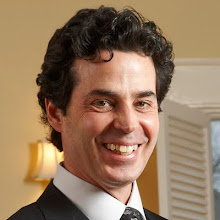Many clients and amateur photographers sometimes ask, why do you charge what you do? The answer can be found by breaking down the time involved in creating a successful photo shoot. I’ll go through a typical project life cycle to answer this question. It is all based on how many projects or jobs can be done in a given year along with the license for use. I’m not going to be talking about actual dollars here but to give you an idea why professional assignment photography costs what it does is simple math.
When a client requests a bid on a job I ask to meet with them and go over the scope of the job. In the meeting I need to find out what they are using the photos for and how many they will actually use. You can read about why I only talk about working on the views that will actually be used in my post Quantity vs. Quality. If the project is strictly for marketing one or two views are usually sufficient. If they need photos for design competition also they might need up to 10 different views. I try to get the client to decide on the views in the first meeting or the scouting walk through. This first meeting usually takes two or three hours so it burns up half a day. The scouting walk through, if it is local, takes another half a day or more. After many phone calls to the owner, the building manager, other participating parties and the client, and the shooting days are decided on, I do my paperwork and send in my bid. By this time I’ve spent another half to whole day.
Now I can start lining up my assistants, stylist and models if any people are to be used in views. No property looks the way you would want for a photo shoot so I use a stylist whenever possible to help smooth things out as far as getting the shots in order esthetically. I like to bring the stylist to the site if possible to go over what I am planning to shoot so we can discus how we will set things up and what props we might need to buy or rent. I let the stylist run around getting the props as well. I use one or two assistants to help haul and set up lighting and run extension cords. Depending on the size and complexity of each view anywhere from a dozen to a hundred lights might be needed. Each light needs to be placed and shaped strategically on the subject and placed out of view. This gets rid of shadows and highlights with no texture or detail and creates interest by using patterns of light to transform the space into a compelling scene. This is more physical work and needs manpower. All of this planning burns up another day.
So far I have spent two and a half to three days making progress toward a 3-day shoot. I will spent 3 days shooting the project. If this were the old film days after the shoot I would simply drop the 4x5 transparencies off at the lab and loose a nights sleep while I wait to see if everything came out the way I wanted. I always shot two sheets of film for every scene to have a backup set in case I need to push or pull the development times. When I picked them up I delivered them and I was done. Now, with digital photography I will end up spending at least as many days in post production on the computer as I spent on location shooting. Since I spent 3 days shooting I will spend another 3 or more days in front of the computer editing. This is what makes digital photography more time consuming and more costly than film. I will also spend about a half day on finishing paper work and registering my photos on the E copyright website. Once I’ve finished this I have spent a total of 9 to 10 days on the job. They aren’t usually consecutive days but they add up to about two weeks.
I hope this sheds some light as to why assignment photography costs what it does. Two weeks of work is necessary to do a good job for a client to present them with compelling photography to help their work stand out from their competition. Industry statistics show commercial photographers spend about one third of their time marketing themselves to get work. This leaves time for shooting 16 to 20 projects in a year. If you have an artists rep to get your work for you could shoot 8 to 10 more projects. The rep usually takes 20% though. Photographers must run a business first to be able sustain a living. If you use simple math it’s not hard to figure out what needs to be charged.
Please feel free to contact me or comment below.
Until next time...



















